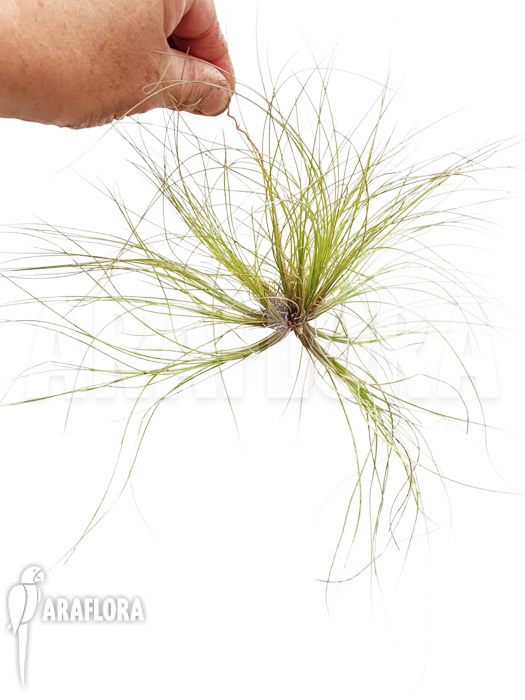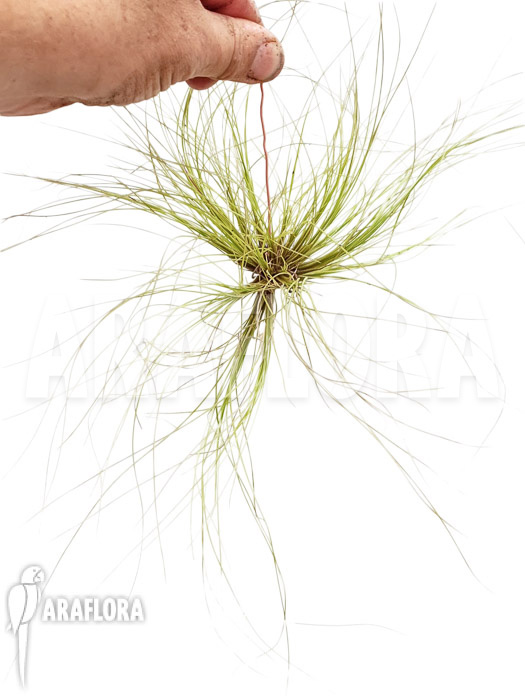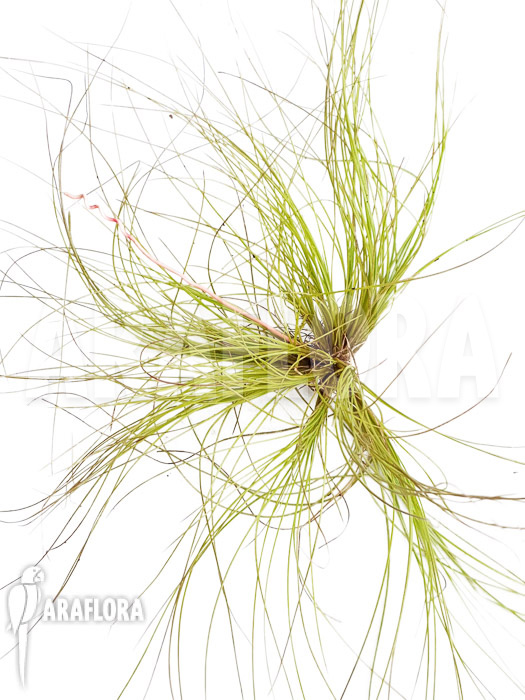Tillandsia juncifolia - Bromt137
Tillandsia juncifolia - Bromt137
Tillandsia juncifolia is an air plant from the pineapple family. This plant creates very slender leaves that are covered in dense grey hairs. The inflorescence is almost two times the size of the plant and gives purple flowers. It is an easy plant that requires bright light conditions and occasional misting.
Currently not in stock
€ 12,00
Keep me up to date?
Araflora will inform you as soon as the product is available again. Please fill in your e-mail address and we will let you know as soon as the product is back in stock. You will get an e-mail message when the product is available again. Unfortunately we cannot say how long this will be or what the price is likely to be.

Receive an e-mail when new stock of this plant arrives.
Share this plant? Press on one of the following icons.
Tillandsia juncifolia is an air plant that grows naturally in Central and South America. This plant consists of a dense rosette of many vey slender, lanceolate leaves. Leaves contain many star-shaped hairs that could capture moisture from the air. Leaves appear grey to faint mint green because of these hairs. When this plant is misted or watered, the plant turns a brighter green. This plant produces roots that only function as anchorage; nutrients and water are absorbed by the leaves. Every mature rosette could produce one inflorescence, often in summer. The faint-pink inflorescence has a long stalk, almost twice the size of the plant with at the end a cluster of flowers. Flowers are tube shaped, purple and show remarkable bright yellow anthers. In the wild, flowers are pollinated by hummingbirds. Propagating this plant is only done by separating young plants from the mother plant.


Tillandsia juncifolia grows naturally on the top branches of tropical trees. This species could be cultivated in greenhouses or on sunny windowsills. Keep this species in temperature ranges of 14 to 30 degrees Celsius. This plant is not particularly sensitive to low humidity conditions but provide ample ventilation. Provide a lot of light for this species; bright indirect light or direct sunlight is needed for good growth. Do not put this plant in soil, it only grows mounted on a slab of bark or a small branch. Mist this plant regularly, preferably with rainwater. Once in a while, this species could be soaked for a short time. Fertilize this plant by dissolving a small concentration of orchid fertilizer on a monthly basis.









 10 cm
10 cm
 5 cm
5 cm












